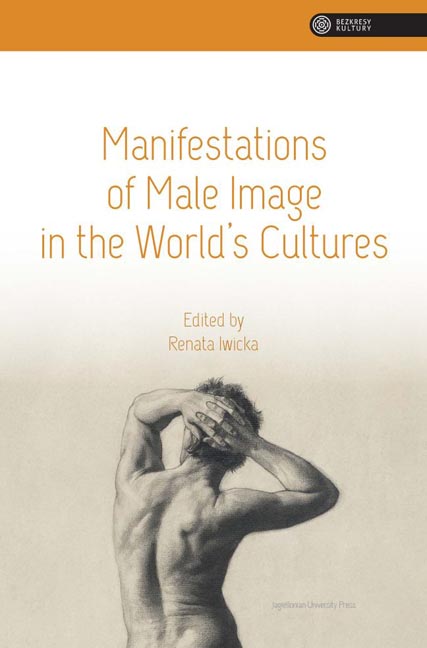Book contents
- Frontmatter
- Contents
- Preface
- “A Jewel Beyond Compare”: Prince Hikaru Genji As A Perfect Male Of The Heian Period In The Light Of Popular Culture Theories
- Cicero and Male Virtue
- Kill The Savage, Save The Man – James Welch’s Chronicle Of Native American History
- On (Self-)Representations Of Masculinity In Siyāmak Herawi’s Short Stories
- Power, Masculinity, And War: Superman, A Case Study
- Redefining New Masculinity In Korean Television Drama Series
- Stripping The Vampire. Erotic Imaginations and Sexual Fantasies In Paranormal Romances (A Study Of Selected Examples)
- The Horned God: Divine Male Principle In British Traditional Wicca
- Biographical Notes of the Authors
- Miscellaneous Endmatter
Kill The Savage, Save The Man – James Welch’s Chronicle Of Native American History
Published online by Cambridge University Press: 14 October 2023
- Frontmatter
- Contents
- Preface
- “A Jewel Beyond Compare”: Prince Hikaru Genji As A Perfect Male Of The Heian Period In The Light Of Popular Culture Theories
- Cicero and Male Virtue
- Kill The Savage, Save The Man – James Welch’s Chronicle Of Native American History
- On (Self-)Representations Of Masculinity In Siyāmak Herawi’s Short Stories
- Power, Masculinity, And War: Superman, A Case Study
- Redefining New Masculinity In Korean Television Drama Series
- Stripping The Vampire. Erotic Imaginations and Sexual Fantasies In Paranormal Romances (A Study Of Selected Examples)
- The Horned God: Divine Male Principle In British Traditional Wicca
- Biographical Notes of the Authors
- Miscellaneous Endmatter
Summary
Abstract: The article discusses the way in which contemporary Native American author James Welch reconstructs the history of the Blackfoot Nation. Welch manages to create a counter-history of the U.S. by creating a hybrid discourse; he presents the inner perspective of his characters by providing them with a language that is a mixture of English and Pikuni borrowings. Additionally, Welch addresses the theme of male dignity when he deconstructs popular Indian stereotypes and fills the void with complex multidimensional Native American characters. The article focuses on two historical novels – Fools Crow and The Heartsong of Charging Elk – that rely to a large extent on historical data and aim to reconstruct the Blackfoot worldview. The main aim of the narrative is to reconstruct ethnohistory and search for a hybrid form reinforced through storytelling techniques, mythological references and magical realist strategies. The article refers to the theoretical frame proposed by critics and academics such as, among others, Louis Owens, Arnold Krupat, Ron McFarland and Catherine Rainwater.
Keywords: contemporary Native American literature, transculturation, counterhistory
There is no denying that masculine characters are extremely important in the literary vision of James Welch. Just like other contemporary Native American writers, through literature Welch wanted to represent not some vague “Indian” culture, but the particularity of his background – Blackfoot heritage. In order to complete this difficult task, he had to start by deconstructing one of the most widespread stereotypes of American Indians, i.e. the Savage Warrior of the Plains. The Blackfeet had all the desired attributes to conform to this cliché because they lived nomadic lives on the plains and they were defeated at the time of the so-called Indian Wars. With the defeat, the Blackfeet joined the ranks of the indigenous who had been stripped of their cultural differences and branded “Vanishing Indians.” There is no denying that Edward Curtis’ sepia photos contributed greatly to this popular image of Native Americans who transformed from bloodthirsty primitives into romantic characters doomed to perish. The Western movies consolidated these stereotypes in mass imagination and it was only in the late 1960s that Native American Renaissance authors started to seriously challenge these static images.
- Type
- Chapter
- Information
- Manifestations of Male Image in the World's Cultures , pp. 47 - 66Publisher: Jagiellonian University PressPrint publication year: 2021



